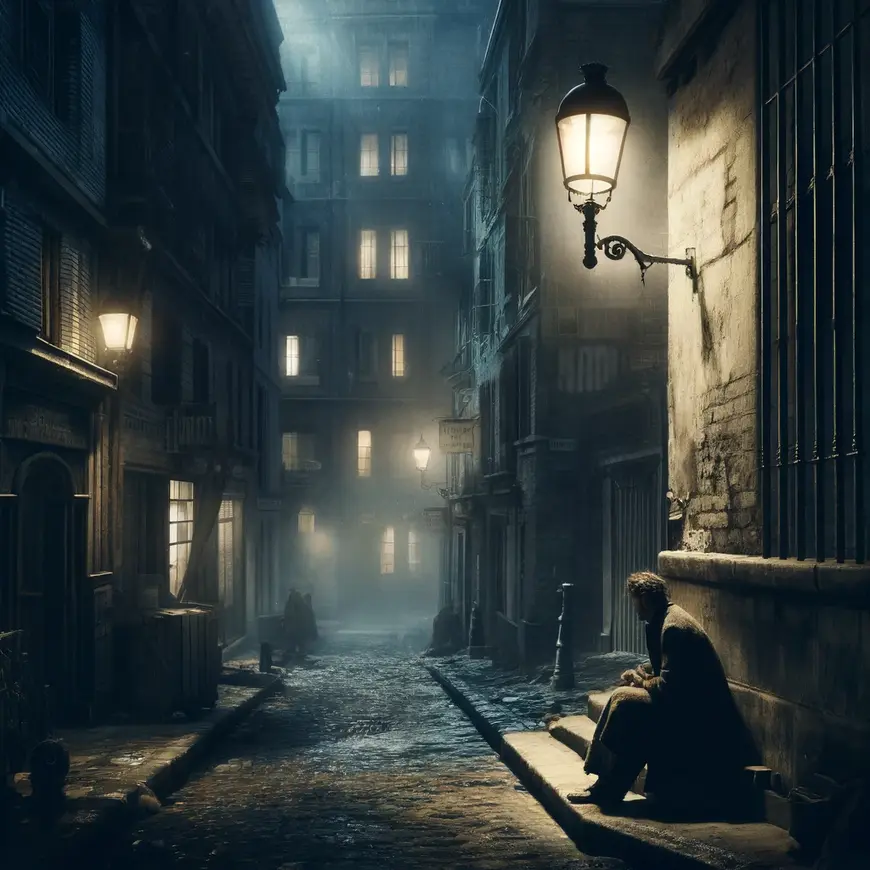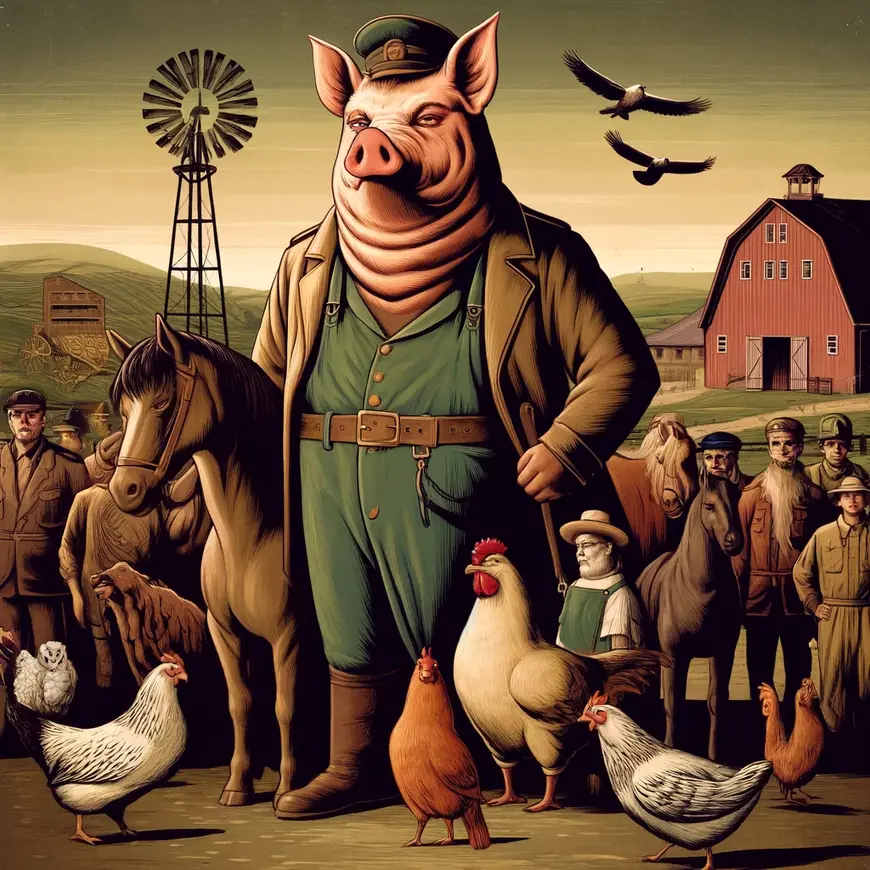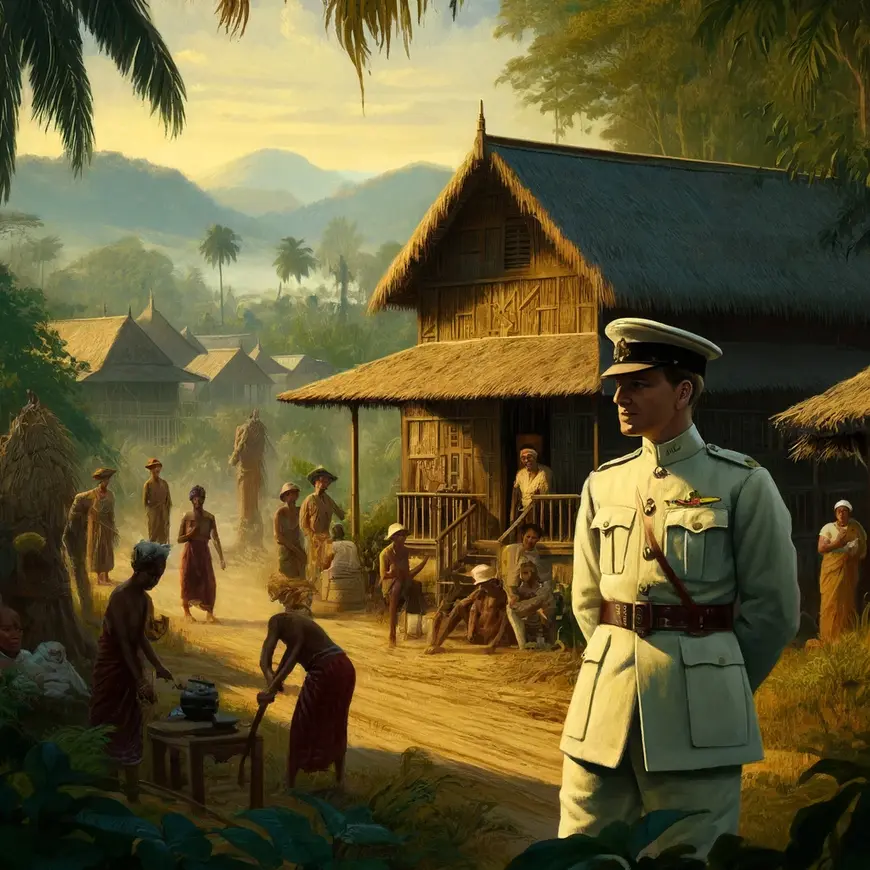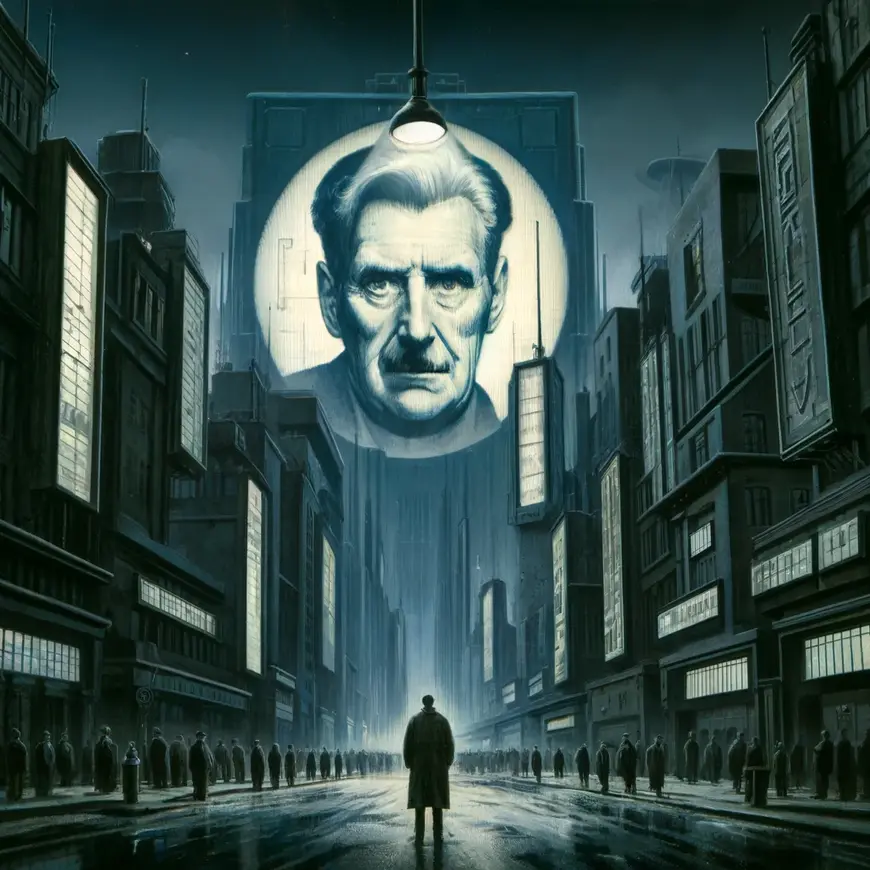A Summary of A Clergyman’s Daughter by George Orwell – Identity and Redemption
What I learned from A Clergyman’s Daughter
Reading George Orwells novel was quite an intriguing journey for me! From the start I found myself immersed in Dorothys world as a devoted daughter living in a quaint village setting. His straightforward and lucid writing style truly captured Dorothys conflicts with her beliefs and responsibilities, amidst the routine challenges she faced daily.
As the plot developed further before me in surprise when Dorothy inexplicably lost her memory and found herself in London instead. Experiencing her struggles with homelessness and poverty and enduring hard labor made me truly understand the circumstances people faced during those times.
Ultimately as the story concluded I was left with a blend of sorrow for Dorothys trials and respect, for her unwavering resilience. I thoroughly enjoyed reading the work as it prompted me to contemplate the complexities of existence and the quest, for significance.
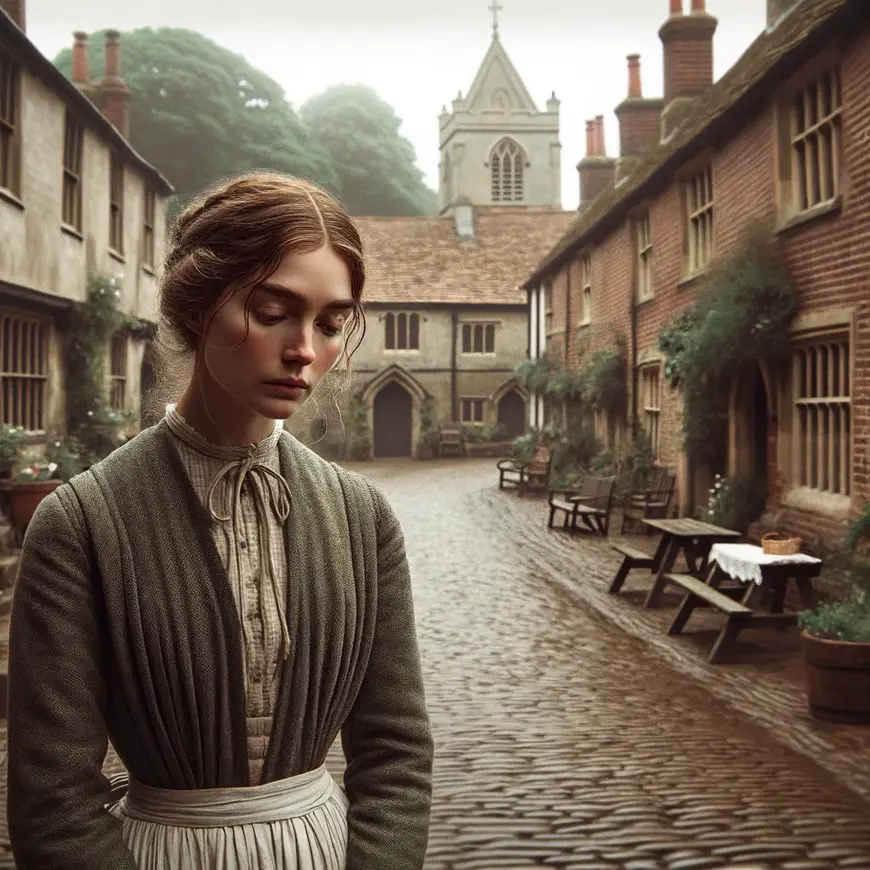
A Clergyman’s Daughter by George Orwell leads readers through the intricate maze of identity, loss, and redemption. This summary dives into the core elements, characters, and pivotal events of the novel in a straightforward manner, offering a comprehensive overview of this captivating tale.
In this book, readers encounter Dorothy Hare, the novel’s protagonist. She is the daughter of a clergyman in the fictional town of Knype Hill. Her seemingly ordinary life takes an unexpected turn when she loses her memory. Leading her on a journey of self-discovery that unravels the complexities of identity.
Dorothy’s life takes a sharp turn when she wakes up one day without any memory of her past. She finds herself in London, penniless and disoriented. The novel follows her struggles as she navigates the harsh realities of life. On the streets, grappling with the loss of her identity and societal expectations.
The Characters of A Clergyman’s Daughter
- Edward, the schoolmaster: Edward’s infatuation with Dorothy sets off a series of events that shape the narrative. His emotional turmoil and internal conflicts reflect the societal pressures of the time.
- Gordon, the tramp: Gordon befriends Dorothy on the streets, providing insight into the lives of London’s destitute. His interactions with Dorothy highlight the stark disparities in society.
- Mr. Warburton, the squire: As a wealthy landowner, Mr. Warburton’s pursuit of Dorothy further explores themes of power and class division.
As Dorothy embarks on a journey of survival, she encounters a variety of experiences. From working in a hop-field to being part of a traveling show, each chapter brings a new facet of society to light. These experiences force Dorothy to confront the harsh realities faced by individuals from different walks of life.
Orwell’s novel serves as a platform for incisive social commentary. He dissects the class divide of the 1930s. And critiques the societal norms that define one’s worth based on social status. Through Dorothy’s diverse experiences, the author reveals the challenges faced by the lower classes and the arbitrary nature of societal judgments.
The Turning Point
Dorothy’s path takes a crucial turn when she joins a traveling circus. This experience prompts a pivotal moment of self-discovery and spiritual awakening. Amidst the unusual characters and circus performances, she faces her past and embarks on a journey of redemption, ultimately reclaiming her sense of self.
Dorothy’s return to Knype Hill marks the novel’s climax. Reuniting with her family and facing her father’s death, she confronts the consequences of her disappearance and the impact it had on those she left behind. This moment of reckoning triggers a deeper exploration of identity and responsibility.
“A Clergyman’s Daughter” ends with a blend of closure and ambiguity. Dorothy’s transformation underscores the potential for personal growth and change. As she reconnects with the remnants of her past, readers are reminded that while identities may shift, the essence of a person remains constant.
Interpretation of A Clergyman’s Daughter
“A Clergyman’s Daughter” by George Orwell intricately explores the labyrinth of identity, unraveling the layers that compose a person’s sense of self. This interpretation delves into the central theme of the novel, offering insights into its impact on both literary critics and society, and shedding light on the enduring relevance of his work.
At the heart of the novel lies a profound exploration of identity. The novel centers on Dorothy Hare, whose identity is shattered when she loses her memory and finds herself adrift in a society that categorizes individuals based on their social roles. Through Dorothy’s journey, the author dissects the intricate interplay between societal expectations, personal perception, and the quest for self-discovery.
Dorothy’s odyssey is a microcosm of the human experience. As she traverses the harsh landscapes of destitution and social prejudice, she is forced to shed the layers of her previous identity. The amnesic blank slate becomes a canvas for her to redefine herself beyond the confines of her past, showcasing the fluid nature of identity and the power of resilience.
The author’s novel serves as a mirror to the societal divisions of his time. Set in the 1930s, a period marked by economic hardship and class disparities, A Clergyman’s Daughter sheds light on the plight of the working class. The characters Dorothy encounters. Ranging from impoverished tramps to wealthy landowners—highlight the stratified society that often denies individuals agency and forces them into predefined roles.
Impact on Literary Critics and Societal Resonance
While overshadowed by Orwell’s more famous works, A Clergyman’s Daughter holds a treasure trove of nuances. Literary critics have revisited the novel to unveil its thematic complexity. They delve into his portrayal of the lower classes, his critique of societal norms, and his exploration of the transformative potential of adversity. The novel’s introspective nature invites interpretations about the malleability of identity and the often arbitrary nature of societal judgments.
While the novel might not be as renowned asthe author’s other works. It offers a distinct window into his thematic concerns. Literary critics often highlight the novel’s exploration of identity, societal critique, and the transformative power of adversity. While not as overtly political as his later works. This novel lays the groundwork for the recurring themes of social injustice and the individual’s struggle within oppressive systems.
His exploration of identity strikes a chord with modern society. In an era of constant self-reinvention and identity exploration, individuals grapple with questions of authenticity and the expectations imposed upon them. The novel’s message resonates with those seeking to navigate societal pressures while forging a genuine path of self-discovery.
The story transcends its time, resonating with readers across generations. The quest for identity, the struggle against social conventions, and the transformative power of adversity are timeless themes. The exploration of these aspects reminds us that the journey of self-discovery is an ongoing process. One that continues to shape lives as eras change.
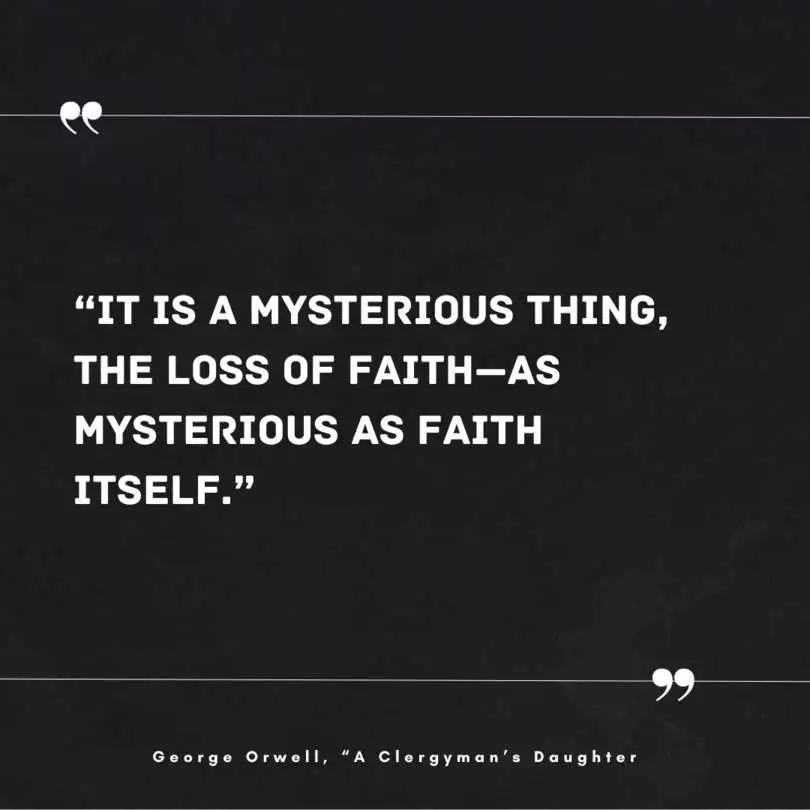
Quotes from A Clergyman’s Daughter by George Orwell
- “She was a lone human being in an alien world, his for a moment, yet always and forever his stranger.”
- “There is no sight in the world more disgusting than a policeman in plain clothes.”
- “All she had to do was to step out of one world and into another, as from one room into another. But the walls of this room were made of time.”
- “Perhaps it did not matter. It was the quality of one’s feelings that mattered, not the object on which they were wasted.”
- “If you have no aim in life, you’re bound to feel rotten. You’ve got to have aims. You can’t sit like a lily in a pond and wait for the cows to come and lick you.”
Trivia Facts about A Clergyman’s Daughter
- Publication Context: Published in 1935, this is Orwell’s second novel. It explores themes of social injustice and class, reflecting his own concerns and experiences.
- Experimental Techniques: The novel is notable for its experimental use of modernist techniques. This reflects his interest in pushing the boundaries of narrative form.
- Personal Dislike: George Orwell himself was not fond of A Clergyman’s Daughter. He later expressed regret about the book, feeling that he had written it simply out of a need for money.
- Based on Personal Experiences: The scenes set in a private school draw from his time teaching at a school in Hayes, Middlesex. While the hop-picking scenes were inspired by his experiences of hop-picking in Kent during a period of tramping.
- Themes: The book tackles issues like loss of faith, the mechanization of education, and the plight of the poor. It portrays a stark reality faced by the protagonist, Dorothy Hare, as she navigates through different social environments.
- Critical Reception: The novel had a mixed critical reception upon its release. With some critics praising its vivid portrayal of the lower classes and others criticizing its bleakness and the perceived confusion in narrative style.
- Print History: “A Clergyman’s Daughter” was out of print for several years. The philosopher had excluded the novel from a list of books he wanted kept in print. Indicating his dissatisfaction with the work.
- Autobiographical Elements: Like Dorothy in the novel, the author experienced periods of poverty and a loss of purpose. Which he reflected through her character’s existential crises and movements among various social classes.
A Reflection of Humanity
The book stands as a poignant reflection of the human experience. Of battling societal expectations, confronting adversity, and striving to uncover one’s true self. His narrative serves as a reminder that identity is a multifaceted tapestry, woven from the threads of personal perception, societal norms, and resilience. In a world where identity is ever-evolving, this novel offers solace and insight, inviting readers to embark on their own journeys of self-discovery.
A Clergyman’s Daughter takes readers on a journey of loss, survival, and self-renewal. Through Dorothy’s experiences, George Orwell examines the multifaceted nature of identity and the transformative potential of adversity. As readers walk alongside Dorothy through her trials and triumphs. They are prompted to question the roles society assigns and the paths that lead to redemption.
